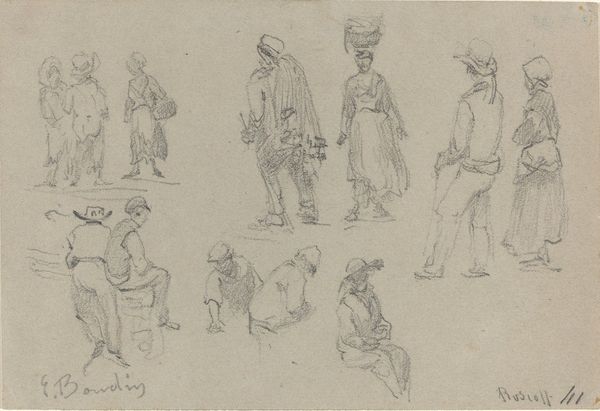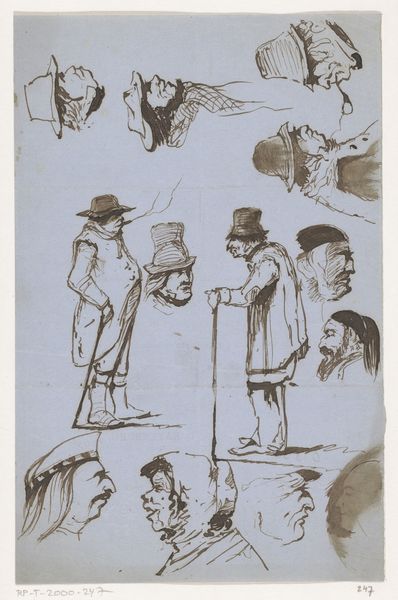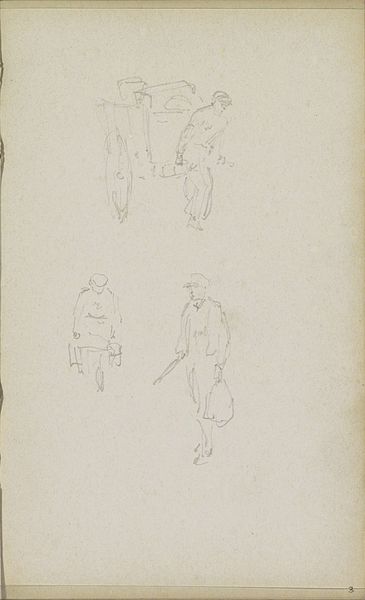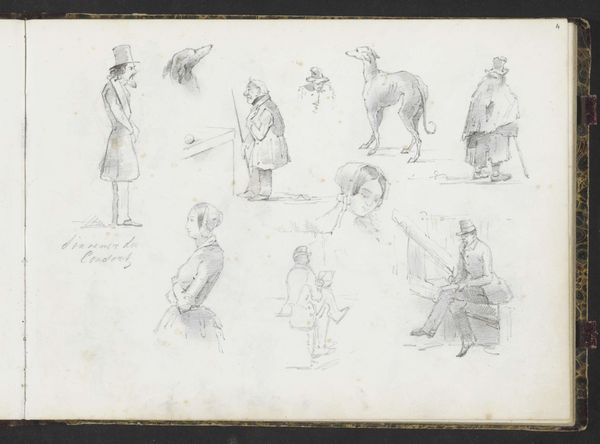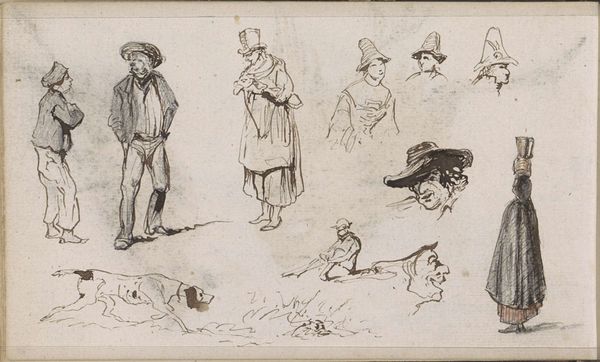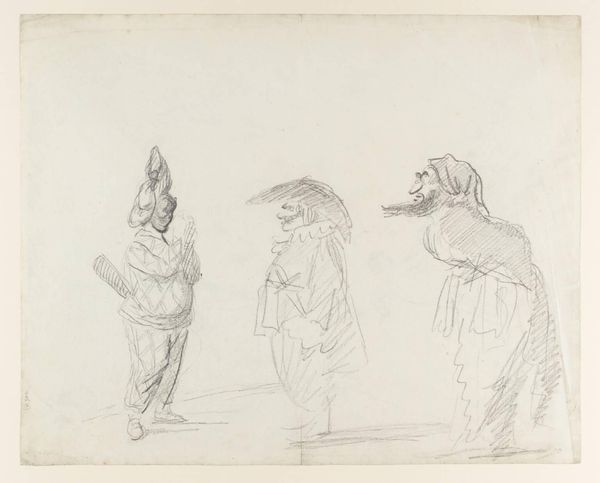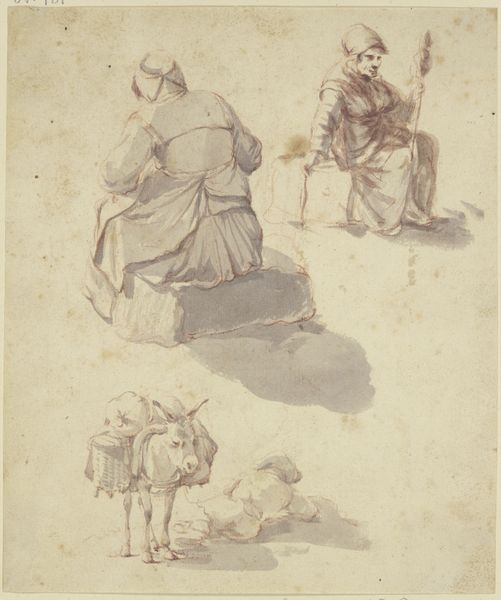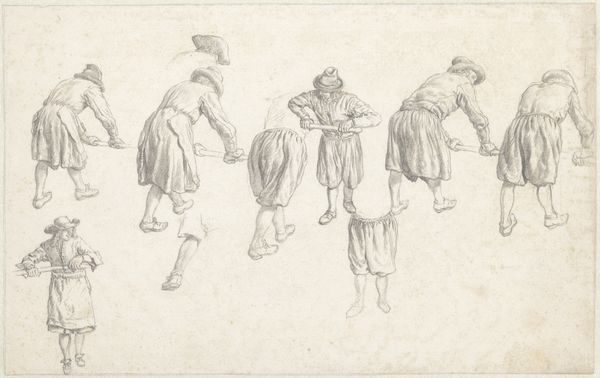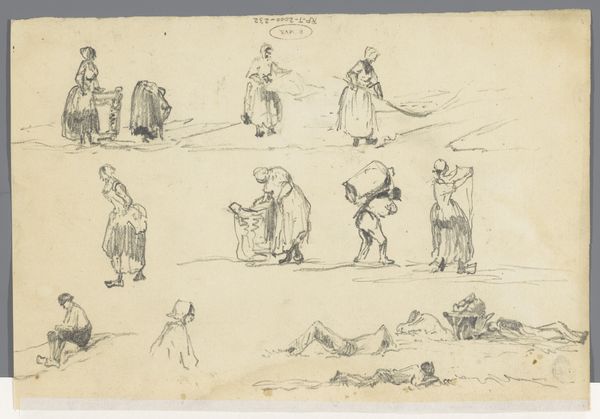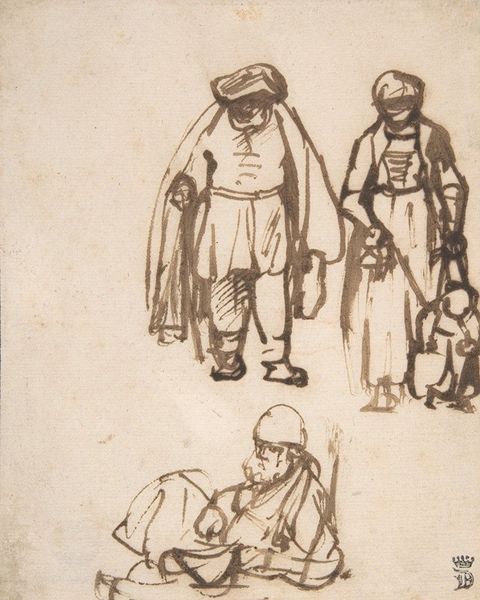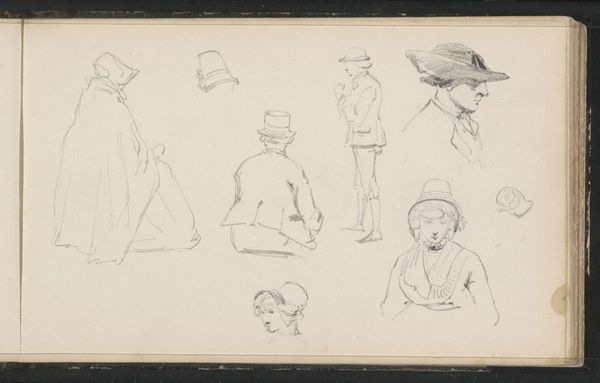
drawing, pencil
#
portrait
#
drawing
#
imaginative character sketch
#
light pencil work
#
quirky sketch
#
sketch book
#
landscape
#
figuration
#
personal sketchbook
#
idea generation sketch
#
sketchwork
#
pencil
#
sketchbook drawing
#
genre-painting
#
storyboard and sketchbook work
#
sketchbook art
#
realism
Copyright: Rijks Museum: Open Domain
Curator: Here we have Adrianus Eversen’s pencil drawing, “Sjouwende Mannen,” created sometime between 1828 and 1897. Editor: There’s a raw energy to this quick sketch. It feels like the artist just captured fleeting moments. I sense a focus on gesture and form, but what’s most interesting is the lack of clear articulation of individual identities. Curator: Precisely. Notice the simplicity of the lines. Eversen has chosen to distill these figures down to their essential forms. Look how the hatch marks suggest the weight these men bear; this communicates a sense of burden through sheer technique. Editor: They become archetypes, everymen caught in cycles of labor. The sacks, buckets, and burdens suggest themes of endurance, perseverance, but I wonder about the symbolic meanings—are they carrying their livelihoods? Or just plain objects? Curator: I appreciate the ambiguity. The light pencil work lends itself to this openness of interpretation. The arrangement on the page is noteworthy; each figure is oriented independently, creating a dynamic interplay of forms. Editor: True. It does seem carefully arranged. Their postures – stooped, hunched – evoke pathos, a sense of human frailty against demanding labor. Each symbol and depiction tells a little story. Curator: And those stories interact solely by existing on a unified plane; Eversen invites a dialogue purely through visual elements, lines and figures alone on paper. The work transcends pure observation and becomes about composition, itself. Editor: A tableau of everyday struggles, seen through the objective lens of realism. A poignant study of humankind. I will contemplate my burdens today with gratitude. Curator: Indeed. A testament to the communicative power inherent in the structural organization of artistic elements, transcending its medium.
Comments
No comments
Be the first to comment and join the conversation on the ultimate creative platform.

